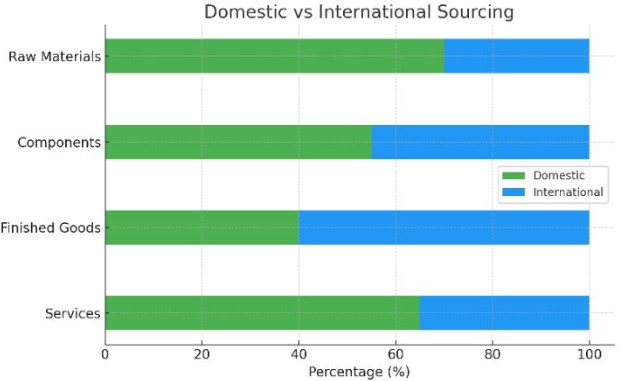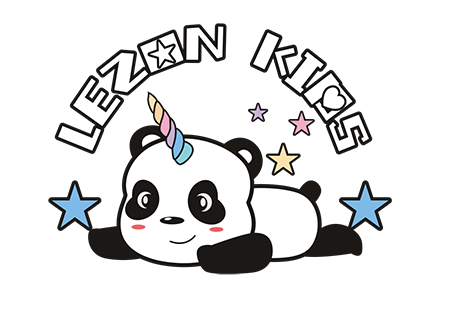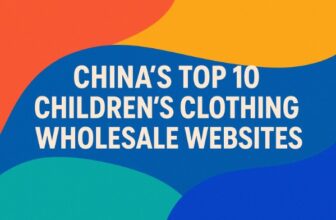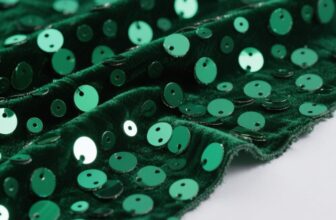Starting a Kids T-shirt Business? Here’s How to Source Wholesale

By 2030, the global market of children’s clothes will reach 327.6 billion dollars. Kids t-shirts are one of the most lucrative points of entry for business men. To succeed, it is important to get wholesale sourcing right. This guide explains all details you will want to know about sourcing wholesale kids t-shirts.
It does not matter whether you are opening your first line of clothing or you are extending current business processes. Your enterprise may make it or break it by understanding wholesale sourcing. Sustainable growth and profitability of the smart sourcing decisions. The ideal manufacturing partner takes you out of a start up to a success story.
Understanding the Kids T-shirt Market Landscape
The T-shirt market for children is not similar to the adult apparel markets. Value, Durability and Comfort is important to parents rather than trendy designs. Children grow very fast and replacement frequency is an important aspect. The flame-resistant materials, and dye requirements, mainly chemical free, are subject to stricter safety regulation.

The t-shirt business dramatically depends on seasonal changes in the undertakings of the kids. Back to school seasons make August and September drive huge sales. The preparation of the summer camp leads to a demand rise in May and June. Themed design opportunities are created due to holiday seasons at all times of the year.
The recognition of these patterns can be used to maximize the decision to purchase wholesale and to set inventory decisions. It is not tough to manage Cash flow as long as season planning is done in an effective way. The strategic time helps cut the carrying costs and obsolescence risks. Competitive advantages are portrayed in the market knowledge.
The Foundation: Domestic vs International Sourcing

The business model, the profit margin and business activities depend on your sourcing strategy. Using sources need shorter lead times and there is reduction in communication channels. Lower shipping rates and quicker resolution of problems are an advantage to business that is on an upswing. But the per-unit prices are generally higher than the international ones.
The international sourcing is cost effective and gains access to specialized production capabilities. China has been the largest hub of children wear manufactures in the world. Legitimate manufacturers such as LEZONKIDS have lower pricing after proving to be good in their field. They have 15 years experience of serving 50+ renowned brands, a fact that depicts reliability.
Important Decisions when International Sourcing
- The cost of transportation, duties and insurance are costs as well as shipping costs and are considered as Total landed costs
- Quality control must contain strong communication and inspection rules
- The lead times stretch to 4-8 weeks as compared to domestic substitutes
- Conversion rates may affect the real end costs massively
Use more than just a comparison of price per unit when undertaking an evaluation. Seasonal inventory needs and sales patterns can be out of whack with shipping delays. Any problem of quality is costlier to fix at an international distance. Presence of barriers in communication can delay product development and solving of problems.
Essential Criteria for Evaluating Wholesale Suppliers

Production capabilities determine whether suppliers can handle your volume requirements consistently. LEZONKIDS manages over 3 million pieces daily with 300+ skilled workers. This scale demonstrates expertise needed for serious business partnerships. Capacity planning prevents bottlenecks during peak seasonal demand.
Quality certifications provide crucial assurance for children’s product safety standards. Look for ISO certifications and SGS testing compliance documentation. International safety standard adherence protects brand reputation and customer trust. These aren’t bureaucratic requirements – they’re business insurance policies.
Communication capabilities often differentiate good suppliers from exceptional manufacturing partners. One-to-one design services from LEZONKIDS accelerate product development processes. Dedicated support teams reduce operational headaches and miscommunication issues. Free sampling for established customers demonstrates commitment to partnership.
Supplier Evaluation Checklist:
- Production capacity matches your volume requirements and growth projections
- Quality certifications meet international children’s clothing safety standards
- Communication systems support real-time collaboration and problem resolution
Minimum Order Quantities: Balancing Cost and Cash Flow
MOQs represent one of the biggest challenges for new businesses. Traditional manufacturers often require 1,000+ pieces per design minimum orders. This creates significant upfront investment requirements for startup companies. However, the landscape is evolving toward more flexible arrangements.
LEZONKIDS offers MOQs as low as 100 pieces with mixed sizing options. Lower MOQs provide several advantages for growing clothing businesses. You can test market response with smaller financial investments. Fresh inventory maintenance becomes easier with reduced order quantities.
Per-unit costs typically increase with smaller order quantities however. Careful margin calculations are essential for profitability planning purposes. Sometimes higher per-unit costs improve overall profitability significantly. Reduced carrying costs and obsolescence risks offset higher production expenses.
Calculate break-even points across different MOQ scenarios for informed decisions. Consider storage, insurance, and working capital requirements beyond production costs. Working capital efficiency often matters more than absolute margins. Smart cash flow management enables faster growth and expansion.
Quality Control: Protecting Your Brand Reputation
Children’s clothing quality isn’t negotiable in today’s competitive marketplace. Parents demand products that withstand active play and frequent washing. Growing bodies require accurate sizing and comfortable fit characteristics. Quality issues damage brand reputation and customer loyalty permanently.
Establish robust quality control processes covering all production aspects systematically. Clear specifications should cover fabric quality and stitching standards. Sizing accuracy and safety requirements need detailed documentation. Professional manufacturers maintain dedicated quality inspection departments for consistency.
LEZONKIDS quality control checks everything from paper samples to finished products. Pre-production samples allow design and construction approval before manufacturing. In-process inspections catch problems when corrections remain cost-effective. Final inspections ensure only compliant products reach customers.
Quality Control Process Steps:
- Pre-production sample approval for design and construction verification • In-process monitoring during manufacturing for early problem detection • Final inspection before shipping to ensure compliance standards
Design and Customization Services
Modern wholesale relationships extend far beyond simple manufacturing service provision. Leading suppliers offer comprehensive design services reducing time-to-market significantly. Development costs decrease dramatically with professional design team access. This levels the playing field against established competitors.
LEZONKIDS employs a 20-person design team providing free services to partners. Experienced designers understand current trends and seasonal requirements thoroughly. Production constraints knowledge prevents costly design mistakes and delays. Professional expertise accelerates the entire product development process.
Pattern libraries offer valuable resources for efficient product development. Rather than starting from scratch, select from proven designs. Customization options allow brand differentiation without development overhead. This approach ensures production-ready specifications from project start.
Access to 3000+ patterns eliminates the need for in-house designers. Small and medium brands compete effectively against larger competitors. Proven designs reduce market risk and development timeframes. Customization services maintain brand uniqueness and market positioning.
Building Long-term Supplier Relationships
Successful children’s clothing brands view suppliers as strategic business partners. Strong relationships provide competitive advantages including priority production scheduling. Flexible payment terms improve cash flow management significantly. Collaborative product development accelerates innovation and market responsiveness.
90% of LEZONKIDS customers provide highly positive evaluations consistently. 60% choose to continue deep cooperation partnerships long-term. These statistics reflect the value of relationship investment strategies. Switching suppliers constantly for marginal savings damages operational efficiency.
Regular communication builds trust and prevents costly misunderstandings effectively. Schedule periodic reviews discussing performance and upcoming requirements systematically. Share business goals and growth plans with manufacturing partners. Suppliers often provide valuable market insights and capability adjustments.
Relationship investment pays dividends through preferential treatment and service quality. Priority scheduling during peak seasons protects delivery commitments. Flexible terms accommodate growth spurts and seasonal variations. Partnership approaches create mutual success and sustainable competitive advantages.
Cost Analysis and Pricing Strategies
Effective wholesale sourcing requires sophisticated cost analysis beyond unit prices. Total landed costs include production, shipping, and duty expenses. Inspection, insurance, and financing costs add significant overhead components. Inventory carrying charges and obsolescence risks impact profitability.
Create detailed cost models comparing different sourcing options systematically. Include scenarios for various volume levels and seasonal variations. Peak production periods may command premium pricing structures. Factor in indirect costs like quality issues and delays.
Your pricing strategy must balance competitiveness with sustainable profitability margins. Premium positioning allows higher margins but requires superior quality. Value positioning demands supply chain efficiency for competitive pricing. Market positioning directly impacts acceptable cost structures and margins.
Cost Components to Consider:
- Direct production costs including materials, labor, and manufacturing overhead
- Logistics expenses covering shipping, duties, insurance, and handling fees
- Quality assurance costs including inspections, testing, and compliance verification
Technology and Digital Integration
Modern wholesale sourcing relies on digital tools streamlining operations. Cloud-based inventory management systems track orders and production progress. Demand forecasting accuracy improves with integrated data analytics. Real-time visibility prevents stockouts and overstock situations.
Some suppliers offer integrated digital services beyond basic manufacturing. LEZONKIDS photography services provide professional product images for e-commerce. Marketing preparation time decreases with supplier-provided digital assets. These services become valuable as online sales dominate retail.
Communication platforms enable real-time collaboration on designs and specifications. Video conferencing allows face-to-face meetings despite geographical distances. Digital sample approval processes accelerate product development cycles. Technology integration builds stronger supplier relationships and operational efficiency.
Production scheduling transparency helps plan inventory and marketing campaigns. Automated updates prevent surprises and enable proactive management. Digital integration reduces administrative overhead and human error risks. Technology adoption provides competitive advantages in operational efficiency.
Sustainability and Ethical Considerations
Modern consumers increasingly prioritize sustainability in purchasing decisions especially. This trend is pronounced in children’s products where parents model responsibility. Environmental practices influence brand perception and customer loyalty significantly. Sustainable sourcing becomes a competitive advantage rather than a cost center.
Evaluate suppliers’ environmental practices including energy-efficient manufacturing facilities thoroughly. Sustainable materials sourcing and eco-friendly packaging options matter. LEZONKIDS demonstrates sustainability commitment through energy-saving workshops and recyclable products. Eco-friendly packaging initiatives appeal to conscious consumers.
Ethical manufacturing encompasses fair labor practices and safe working conditions. Transparent supply chains build consumer trust and brand credibility. These factors may increase costs slightly but protect reputation. Conscious consumers willingly pay premiums for ethical products.
Sustainability Evaluation Criteria:
- Environmental practices including energy efficiency and waste reduction programs
- Sustainable material sourcing and eco-friendly packaging implementation
- Ethical labor practices and transparent supply chain operations
Risk Management and Contingency Planning
Wholesale sourcing involves various risks requiring proactive management strategies. Supply chain disruptions can halt production and delay deliveries. Quality issues damage brand reputation and customer relationships permanently. Currency fluctuations impact costs and profitability margins significantly.
Diversify your supplier base to reduce single-source dependency risks. Building strong primary relationships remains important for consistency. Maintaining qualified backup suppliers provides security during disruptions. This strategy proved invaluable during recent global supply chain challenges.
Financial risk management includes favorable payment term negotiations systematically. Letters of credit protect large order investments and reduce risks. Currency hedging consideration for international transactions stabilizes costs. Insurance options protect against shipping delays and quality defects.
Contingency planning should address various disruption scenarios and response strategies. Alternative shipping routes and methods provide flexibility during crises. Emergency supplier qualification processes accelerate backup activation when needed. Risk mitigation becomes a competitive advantage during uncertain periods.
Scaling Your Operations Successfully
Growth requires evolving sourcing strategies that match increasing volume requirements. Startup approaches become inefficient at scale requiring strategic transitions. Successful scaling demands proactive planning rather than reactive scrambling. Anticipate capacity needs well in advance of actual requirements.
Monitor growth trajectory and forecast capacity requirements systematically over time. Lead times for qualifying new suppliers extend several months. Expanding relationships with existing partners requires advance planning. Starting conversations early prevents growth bottlenecks and operational constraints.
Consider vertical integration opportunities as volume increases justify investments. Some businesses bring operations in-house for control advantages. Others develop exclusive partnerships providing similar benefits. Capital investment requirements vary significantly between these approaches.
LEZONKIDS partnership approach supports business growth without capital investment. Exclusive relationships provide control benefits with operational flexibility. Scaling strategies should match business models and financial capabilities.
Future Trends in Kids T-shirt Wholesale
The children’s clothing industry evolves rapidly driven by changing preferences. Technological advancement creates new opportunities and challenges continuously. Global economic shifts impact supply chains and cost structures. Forward-thinking businesses anticipate trends for competitive advantages.
Customization and personalization represent growing market opportunities for brands. Parents seek unique products reflecting children’s personalities and interests. Suppliers offering flexible customization options position partners advantageously. Small-batch personalized production becomes increasingly viable and profitable.
Sustainable materials and production methods gain importance with consumers. Bio-based fabrics and recycled materials appeal to conscious buyers. Closed-loop manufacturing processes provide superior performance characteristics often. Environmental benefits combine with practical advantages for market appeal.
Emerging Trends to Watch:
- Increased demand for personalized and customizable children’s clothing options • Growing emphasis on sustainable materials and environmentally responsible production • Technology integration enabling better inventory management and customer experience
Common Mistakes to Avoid
New businesses often make costly sourcing mistakes that experienced entrepreneurs avoid. Focusing solely on price ignores total cost of ownership. Quality shortcuts damage brand reputation and customer relationships permanently. Poor supplier communication leads to misunderstandings and production delays.
Insufficient market research results in inappropriate product selections and inventory. Seasonal timing mistakes create cash flow problems and missed opportunities. Inadequate quality control systems allow defective products to reach customers. These mistakes are preventable with proper planning and execution.
Overcomplicating initial product lines increases development costs and timelines unnecessarily. Starting with simple, proven designs reduces risk significantly. Complexity can be added gradually as experience and volume grow. Simplicity enables faster market entry and learning opportunities.
Neglecting relationship building treats suppliers as transactional vendors only. This approach misses opportunities for collaboration and mutual benefits. Strong partnerships provide competitive advantages through preferential treatment. Investment in relationships pays dividends throughout business growth phases.
Building Your Action Plan
Success requires systematic planning and execution of sourcing strategies. Define clear requirements including quality standards and volume projections. Research potential suppliers thoroughly using multiple information sources. Contact LEZONKIDS for comprehensive consultation on your specific needs.
Request samples and evaluate quality against your standards carefully. Compare total costs across different suppliers and scenarios. Negotiate terms that support your business model and growth plans. Start with smaller orders to test relationships before major commitments.
Develop quality control processes and communication protocols from the beginning. Establish clear expectations and performance metrics with chosen suppliers. Monitor performance regularly and provide feedback for continuous improvement. Build relationships that support long-term business success and growth.
Conclusion: Your Path to Wholesale Success
Starting a successful kids’ t-shirt business requires strategic wholesale sourcing. The right suppliers become integral partners in business success. They influence product quality, profit margins, and operational efficiency significantly. Strategic sourcing decisions create sustainable competitive advantages over time.
The children’s clothing market offers tremendous opportunities for prepared businesses. Understanding wholesale sourcing navigation principles drives long-term growth. Focus on relationship building, quality assurance, and strategic planning. These elements combine to create winning business formulas.
Remember that wholesale sourcing is an ongoing process requiring attention. Markets change, businesses grow, and supplier relationships evolve continuously. Staying engaged with trends and maintaining strong partnerships ensures success. Continuous optimization of operations drives competitive advantages and profitability.





